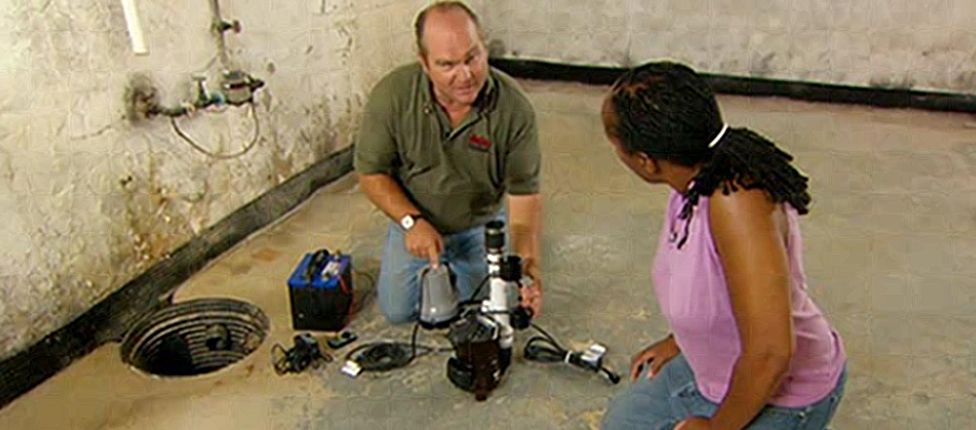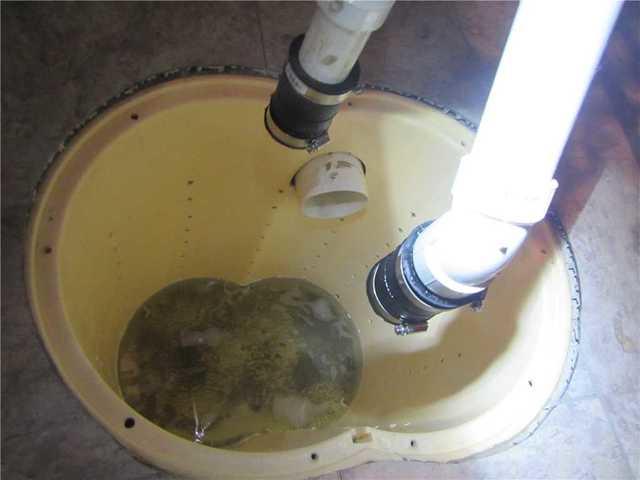Just how do you feel in regards to Keep Your Sump Pump Clean, It'll Keep You Dry?

Sump pumps are essential parts in many homes, particularly in areas prone to flooding or too much moisture. They assist prevent water damage by efficiently getting rid of excess water from basements or crawl spaces. Nevertheless, like any other device, sump pumps need regular upkeep to guarantee they function effectively when required one of the most. Cleaning your sump pump is an important part of its maintenance, and understanding how to do it effectively can conserve you from pricey fixings and potential catastrophes.
Introduction
Maintaining a tidy sump pump is important for its proper functioning and durability. Disregarding this vital job can result in obstructions, malfunctions, and inevitably, water damages to your home. Therefore, learning exactly how to clean a sump pump is essential for house owners that rely upon these tools to maintain their cellars dry and protected.
Recognizing the Sump Pump
Prior to diving into the cleaning process, it's necessary to have a fundamental understanding of exactly how a sump pump functions. Typically set up in a pit or basin below the cellar flooring, a sump pump includes a number of crucial elements, including a pump, a float button, and a discharge pipeline. When water gathers in the pit, the float switch triggers the pump, which after that pumps the water out with the discharge pipeline, far from the building's structure.
Indications of a Dirty Sump Pump
Understanding when your sump pump requires cleaning is critical for protecting against possible breakdowns. Some typical indicators that show a filthy sump pump include weird sounds throughout operation, decreased water flow, and noticeable particles in the pit. If you observe any one of these signs and symptoms, it's important to clean your sump pump promptly to avoid any kind of more issues.
Preparing for Cleaning
Prior to you begin cleaning your sump pump, it's important to take some security precautions. Begin by shutting off the power to the pump to prevent any type of electric crashes. Additionally, wear ideal protective gear, such as handwear covers and goggles, to safeguard on your own from dirt, debris, and potential virus.
Detailed Guide to Cleansing a Sump Pump
Shutting Off the Power
Begin by disconnecting the power supply to the sump pump to stop any type of mishaps while cleaning.
Getting Rid Of Debris and Dust
Make use of a bucket or a scoop to eliminate any type of visible debris, dust, or debris from the sump pit. Dispose of the debris effectively to prevent it from obstructing the pump or the discharge pipeline.
Cleaning the Pump and Float Switch
Once the pit is clear of debris, very carefully eliminate the pump from the pit. Inspect the pump and the float switch for any kind of signs of damages or wear. Utilize a soft brush or fabric to clean up the surfaces and get rid of any kind of accumulated grime.
Flushing the System
After cleaning the pump and float button, purge the sump pit with tidy water to remove any kind of continuing to be dust or debris. This will certainly help make sure that the pump runs efficiently and effectively.
Checking for Proper Functioning
Prior to re-installing the pump, execute a fast examination to make certain that the float switch triggers the pump appropriately. Put some water into the sump pit and observe the pump's procedure. If whatever is working properly, you can reconstruct the pump and reconnect the power supply.
Upkeep Tips to Keep Your Sump Pump Clean
In addition to periodic cleaning, there are several upkeep tips you can comply with to keep your sump pump in optimal condition:
Final thought
Cleansing your sump pump is a vital aspect of its maintenance and makes sure that it runs effectively when you require it one of the most. By complying with the actions described in this overview and integrating regular maintenance right into your routine, you can expand the life expectancy of your sump pump and safeguard your home from water damage.
6 STEPS ON HOW TO CLEAN A SUMP PUMP PROPERLY
UNDERSTANDING SUMP PUMPS
Your sump pump plays a crucial role in protecting your home by managing and removing excess water. It primarily functions as a “shield”, guarding your basement against the damaging effects of water accumulation. The pump is housed in a sump pit in the lowest part of your basement, and its job is to pump out any water that collects there.
During heavy rainfalls or when snow melts rapidly, water can infiltrate your basement, posing potential risks like flooding, structural damage, and harmful mold growth. Here, the sump pump springs into action, pumping out the intruding water and directing it away from your home.
SAFETY FIRST
Before cleaning, remember to prioritize safety. Disconnect the sump pump from the power source to prevent any accidental electric shocks. Also, wear sturdy gloves to protect your hands from any sharp or dirty components within the pump.
REMOVE THE SUMP PUMP
After ensuring your safety, the next step is to remove the sump pump from its pit. Doing this might require careful maneuvering as you don’t want to damage any pump components. Once removed, clean the sump pit to remove any accumulated debris or sludge.
INSPECT THE PUMP
Inspect the pump for any visible signs of wear or damage. Check the power cord, float switch, and impeller housing. If any components look worn out or damaged, consider replacing them to ensure optimal performance.
CLEAN THE PUMP
Thoroughly clean the pump with warm, soapy water. Make sure to rid it of any dirt, gravel, or other debris that might impede its performance. You can use a toothbrush to clean the small, hard-to-reach parts of the pump.
REINSTALL THE SUMP PUMP
Reinstall the pump into the sump pit Make sure it’s positioned correctly to remove the water effectively Once it’s back in place, reconnect it to the power source TEST THE PUMP
Finally, pour some water into the pit to ensure the pump works correctly. It should start automatically and begin pumping out the water; if it doesn’t, check the power source and the positioning of the pump.
Remember, while cleaning your sump pump is an essential part of home maintenance, hiring a professional plumber for a thorough inspection and cleaning at least once a year is also important. This will ensure that your pump is in optimal condition, ready to protect your home from potential water damage.
BEST PRACTICES FOR CLEANING SUMP PUMP DISCHARGE PIPES
Regular Inspection: Regularly inspect your discharge pipes, especially during heavy rainfall or snowmelt periods. Look for any signs of blockage or damage. Early detection of problems can prevent serious issues down the line. Periodic Cleaning: Over time, sediment and debris can accumulate in the discharge pipes, impeding the flow of water. Regular cleaning helps keep the pipes clear and functioning efficiently. You can use a high-pressure water jet to effectively clean the pipes. Insulation During Winter: In colder climates, discharge pipes can freeze, blocking the outflow of water. Protect your discharge pipes from freezing temperatures by insulating them with foam pipe insulation. This will ensure the sump pump can continue to discharge water even in freezing conditions. Proper Positioning: The discharge pipe should be positioned to direct water away from your home’s foundation. Improper positioning can lead to water seeping back into the basement. Ensure the pipe is long enough and angled correctly. Installation of a Check Valve: A check valve prevents water from flowing back into your sump pit after the pump has pushed it out. Installing a check valve helps maintain the efficiency of your sump pump and reduces the risk of flooding. Minimize Pipe Turns: Every curve or turn in the discharge pipe can decrease the efficiency of water flow. By minimizing turns and bends in your discharge pipe, you can increase the efficiency of your sump pump. https://www.fullspeedplumbing.com/how-to-clean-a-sump-pump-properly9999/

I stumbled upon that entry about Keep Your Sump Pump Clean, It'll Keep You Dry while doing a search on the search engines. Sharing is nice. You won't know, you could be doing someone a favor. Thanks for your time invested reading it.
Call Today